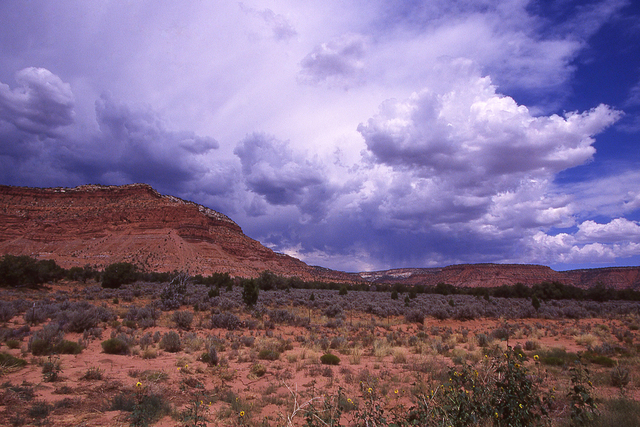Kanab, Utah, boasts Hollywood good looks

Set amid the stunning scenery of Utah’s color country, historic Kanab is a portal to the past and a hub for recreational attractions in Southern Utah and Northern Arizona. The picturesque community of about 4,500 people is a county seat and business center for a sparsely populated region of scattered farms, ranches and small communities.
Tourist-friendly Kanab, sitting astride busy Highway 89, is central to several national parks, monuments and recreation areas, lovely Dixie National Forest, a number of Utah state parks and points of interest such as Best Friends Animal Sanctuary in nearby Angel Canyon.
Kanab is about 200 miles from Las Vegas. Follow Interstate 15 north into Utah, continuing through St. George to the turnoff to Hurricane on state Route 9. From Hurricane, access Kanab by either of two routes. The northern approach follows state Route 9 through Zion National Park to U.S. Highway 89 and turns south toward Kanab. The southern approach turns in Hurricane onto state Route 59, which becomes Arizona Route 389, reaching U.S. 89 at Fredonia. Kanab is seven miles to the north. The southern route avoids the park entry fee and large-vehicle escort fee that apply in Zion.
Kanab offers restaurants, road services and varied accommodations, including motels, bed-and-breakfast inns, guest ranches, RV parks and nearby access to public and private campgrounds. Its lively downtown invites browsing through interesting shops, many with a distinctly Western flavor.
On a grid of downtown streets, visitors find many charming reminders of Kanab’s 19th-century beginnings, described on a walking or driving tour map available at local museums. The Kanab Heritage Museum is housed in a former library building downtown. A couple of blocks away, the affiliated Heritage House occupies a handsome 1800s residence. Both museums are open free of charge weekdays May through September from 10 a.m. to 5 p.m.
The area’s first non-native settlement in frontier times was at Fort Kanab, built in 1864 on the east side of Kanab Creek to fend off Indian raids. A series of attacks forced the abandonment of the fort by 1866. After treaties with the tribes helped calm the frontier, a group of 10 Mormon families established the town of Kanab in 1870.
Kanab remained a remote rural outpost for decades until the movie industry discovered the area’s scenic appeal in the 1920s. Soon, so many film companies, directors and movie stars arrived in Kanab that the little town was often called “Little Hollywood.” More than 100 films, mostly Westerns, were made in locations around Kanab, with film crews and stars finding temporary residence there.
Visit the Parry Lodge, a nostalgic motel and restaurant where many movie stars stayed. The restaurant’s walls form a photographic history of Hollywood celebrities who were guests there during the golden years of Western films.
Many television shows were also filmed near Kanab, including “Gunsmoke,” shot on a permanent set outside of town.
Some of the movie sets left behind have been moved to a movie “town” on Center Street with a museum featuring details of movie-making in the area.
Kanab schedules several summer events enjoyed by locals and visitors alike. Arts and crafts fairs, car shows, rodeos, relay races and other sporting events are favorite attractions. The Jacob Hamblin Days Festival, set for June 17 and 18, is a celebration of pioneers and Western heritage with many activities. The Fourth of July in Kanab is a lively hometown celebration with typical all-American attractions.
The 18th annual Western Legends Round-up Aug. 25 to 27 features film, music and poetry and spotlights Kanab’s Hollywood connection. The featured production this year is the popular show “Death Valley Days,” which began as a radio presentation in 1930, continuing until 1945. It was revived in 1952 as a television series that drew weekly audiences until 1970. Several of the TV episodes were filmed along creeks and in canyons near Kanab.
Margo Bartlett Pesek’s Trip of the Week column appears on Sundays.